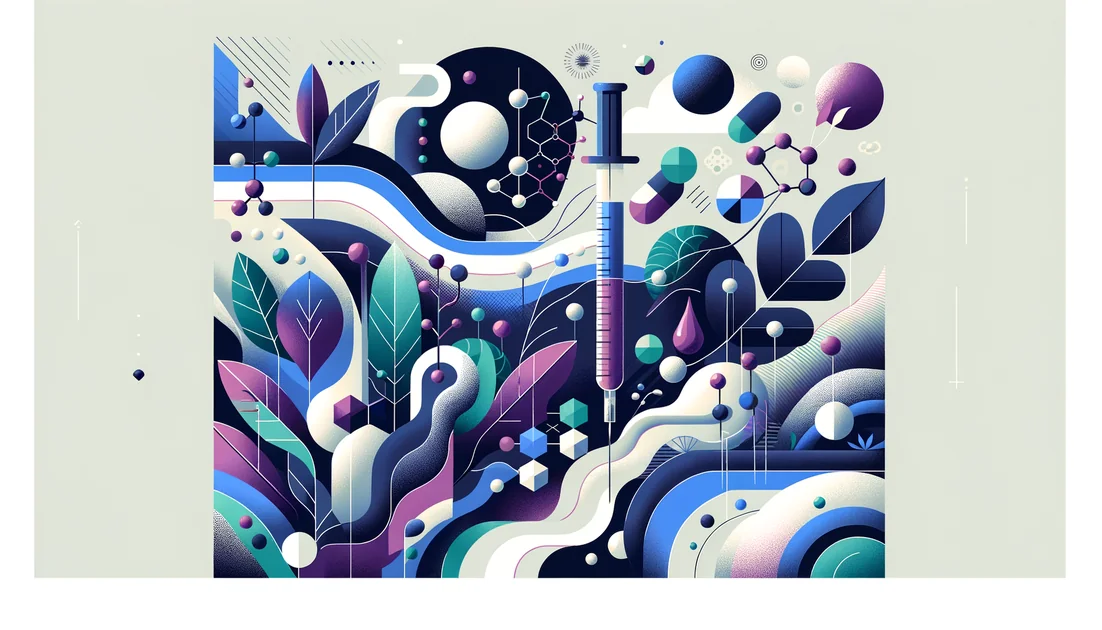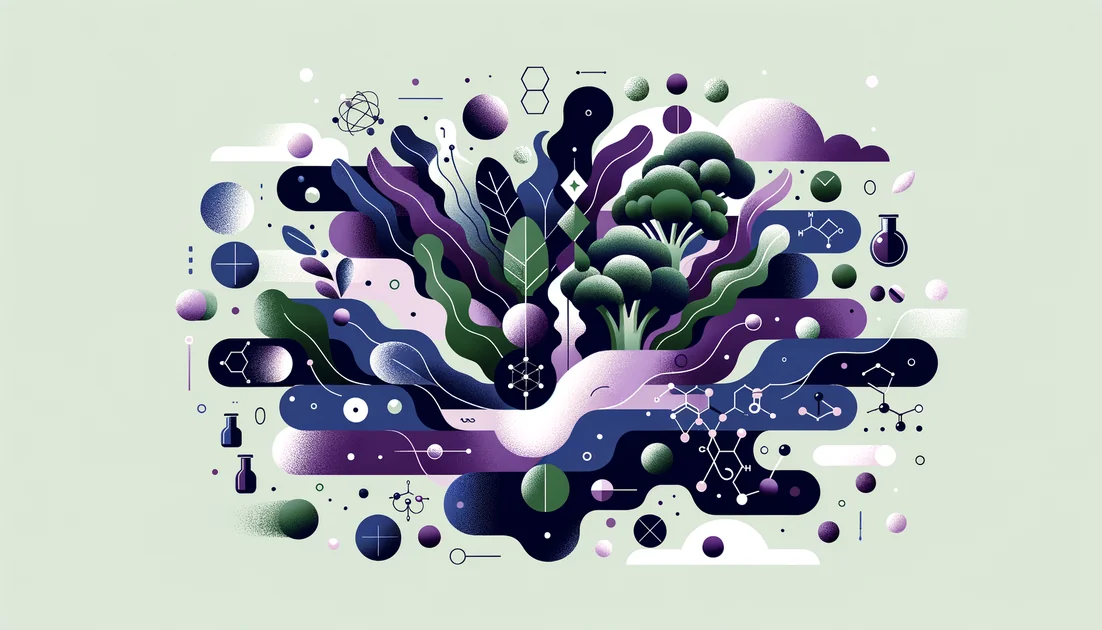
The Antioxidant Paradox: Vitamin E's century-long arc from fertility clue to focused medicine
A vitamin named for childbirth once symbolized vitality—yet, a century later, large trials found that taking more of it could raise certain health risks. How did Vitamin E travel from a fertility clue in a Berkeley rat room to a cautionary label on supplement shelves?
- Evidence
- Promising
- Immediate Effect
- No → 8–12 weeks for deficiency symptoms; 6–24 months for disease endpoints (e.g., NASH, AMD)
- Wears Off
- Gradually over months; some effects persisted ≥1 year post-supplementation in trials
From lettuce leaves to "tocopherol"
In 1922, Herbert Evans and Katharine Bishop noticed something puzzling: rats on a purified diet could conceive but could not carry litters to term—until a dash of wheat-germ oil fixed it. The missing factor, later isolated from wheat germ, earned a name that sounded like a promise—tocopherol—Greek for "to carry a pregnancy," with "-ol" marking an alcohol. Vitamin E had entered the story as the fertility vitamin, a talisman of life itself. [1] [3] As our methods matured, so did our definitions. We learned there are eight family members (four tocopherols, four tocotrienols), but the liver has a favorite: alpha-tocopherol. A dedicated chaperone protein relays alpha-tocopherol into circulation, letting other forms fade—an elegant bit of cellular gatekeeping that explains why labels, doses, and effects don't all match. [2]
When promise met the randomized trial
By the late 1990s, Vitamin E had become the emblematic antioxidant. If oxidants battered arteries and DNA, wouldn't a daily capsule be a shield? Two landmark studies challenged that assumption. First, the HOPE/HOPE-TOO trials: more than 9,500 people with vascular disease or diabetes took 400 IU of natural Vitamin E for years. Result: no reduction in major cardiovascular events or cancers—and a higher rate of heart failure. The authors cautioned, "There is a tendency to accept 'natural products' as being safe..," urging rigorous testing before mass use. [4] [17] Second, in healthy male physicians, Vitamin E didn't prevent heart attacks or strokes—but hemorrhagic strokes were more common in the vitamin group. Antioxidant theory met the messy reality of human biology. [7]
The prostate plot twist
Nothing overturned assumptions like SELECT, a 35,000-man trial testing 400 IU/day of synthetic alpha-tocopheryl acetate to prevent prostate cancer. With longer follow-up, men on Vitamin E had a statistically significant 17% higher prostate cancer incidence than placebo—about 11 extra cases per 1,000 men over seven years. "Vitamins are not innocuous," lead author Eric Klein warned. [5] [6] [16] Why the risk? Investigators are still dissecting dose, baseline nutrient status, and interactions with selenium. A National Cancer Institute analysis suggested that starting selenium levels may modify risk—an early hint that one-size-fits-all supplementation can backfire. [6]
Where Vitamin E still shines
Here the story narrows—from sweeping prevention to targeted therapy.
Nonalcoholic steatohepatitis (NASH): In the NIH-funded PIVENS trial, 800 IU/day of natural Vitamin E for 96 weeks improved liver fat and inflammation in nondiabetic adults with biopsy-proven NASH (though not fibrosis). For some, the liver's microscopic storm quieted. [10]
Age-related macular degeneration (AMD): Vitamin E didn't prevent AMD—but as part of the AREDS/AREDS2 eye-vitamin formula (with vitamin C, zinc, copper, and lutein/zeaxanthin in AREDS2), it helped reduce progression from intermediate to advanced AMD by about 25%. It is a character actor in a proven ensemble, not a soloist. [11]
Frank deficiency: When the body can't absorb fat—think cystic fibrosis, cholestatic liver disease, or rare genetic conditions—Vitamin E deficiency can erode nerves and coordination. In a recent case report, a previously healthy adult with sensory axonopathy improved markedly after three months of Vitamin E repletion. In classic abetalipoproteinemia, high-dose Vitamin E can arrest progressive neuropathy. Here, supplementation isn't a wellness gamble; it's therapy. [12] [13]
The form and the dose: a quiet switch
Vitamin E isn't just a number; it's a family reunion with a bouncer at the door. The liver's alpha-tocopherol transfer protein preferentially escorts alpha-tocopherol into the bloodstream. Flood the system with supplemental alpha, and blood levels of gamma-tocopherol—abundant in typical U.S. diets—drop. Randomized trials show 400–1,200 IU/day of alpha can reduce circulating gamma by roughly half within weeks. Tissues adapt slowly; even adipose stores may take a year or more to drift back after stopping. [2] [14] [15] That displacement may matter. Gamma-tocopherol has distinct chemistry in handling reactive nitrogen species; reducing it could subtly reshape antioxidant defenses. It's one more reason "more alpha" isn't automatically "better."
Practical guardrails without the hand-waving
If you're correcting a proven deficiency or a malabsorption disorder, Vitamin E is medicine—dosing and monitoring belong with your clinician. [2]
If you have intermediate AMD, the AREDS2 formula (which includes 400 IU of Vitamin E) is evidence-based for slowing progression—again, as a combo, not Vitamin E alone. [11]
For otherwise healthy adults, large trials do not support Vitamin E to prevent heart disease, cancer, or death—and signal risks at common high doses (e.g., increased prostate cancer with 400 IU/day; more hemorrhagic strokes in one trial; heart-failure signals in high-risk patients). Food sources remain the safer default. [4] [5] [7] [9]
"There is a tendency to accept 'natural products' as being safe..," the HOPE-TOO team wrote. That's the paradox of Vitamin E: a molecule essential for life that, outside the right context, can tip biology the wrong way. [17]
The next chapter: precision, not panaceas
Future work is already asking sharper questions: Do genetics, starting nutrient levels, or the balance of tocopherols/tocotrienols decide who benefits or who's harmed? SELECT's investigators are probing baseline nutrient status to decode who is vulnerable at what dose. The takeaway for now is wonderfully unsexy: match the tool to the job. Use Vitamin E where evidence is strong (deficiency, specific eye and liver indications); resist the allure of "just in case." [6]
Key takeaways
- •Vitamin E began as a fertility clue and matured into a family of eight compounds, with the liver preferentially retaining alpha-tocopherol.
- •Large trials reshaped expectations: 400 IU/day increased prostate cancer risk in SELECT and raised heart-failure events in HOPE/HOPE-TOO, without cardiovascular or cancer benefits.
- •AREDS/AREDS2 formulas (including 400 IU Vitamin E) reduce progression from intermediate to advanced AMD by about 25%, but don't prevent AMD onset.
- •Targeted clinical uses exist: deficiency or fat-malabsorption states, intermediate AMD (AREDS2), and select nondiabetic adults with biopsy-proven NASH under specialist care.
- •Practical use: take with meals containing fat; consistency over weeks to months matters more than time of day.
- •Cautions: high-dose alpha-tocopherol (~400 IU/day) has been linked to prostate cancer, hemorrhagic stroke signals in one trial, and higher heart-failure events; discuss if you have bleeding risks or use anticoagulants.
You might also like
Explore more of our evidence-led investigations, comparisons, and guides across every article style.

Thorne
The Paradox: Sports-trusted testing, guarded transparency—and a recent certification misstep

Collagen Peptides (Hydrolyzed) vs Bone Broth (Traditional/Commercial)
For targeted, measurable support (especially joints) choose collagen peptides. Pick bone broth for a warm, savory, light-protein drink—just don't count on it for clinically studied collagen doses. [1][2][3]

Best for Weight loss
Green tea catechins + caffeine

Broccoli Extract (sulforaphane-rich)
On a hazy summer morning in eastern China, volunteers lined up for a lime-and-pineapple drink that had one odd ingredient: powdered broccoli sprouts. Within 24 hours, their bodies were flushing out more benzene—a carcinogen from air pollution—than the day before. A vegetable extract, not a drug, had quietly turned up the body's own detox gears. What else could this bitter green do? [3]

Lion's Mane + Bacopa: Smart Memory Duo or Just Hype?
The combo is a theoretical dual-pathway stack (neurotrophic + cholinergic), but there are no direct head-to-head studies proving synergy.

Tocotrienols
The stealthier cousins of vitamin E—built with springy tails that move differently in cell membranes and behave differently in your body.
